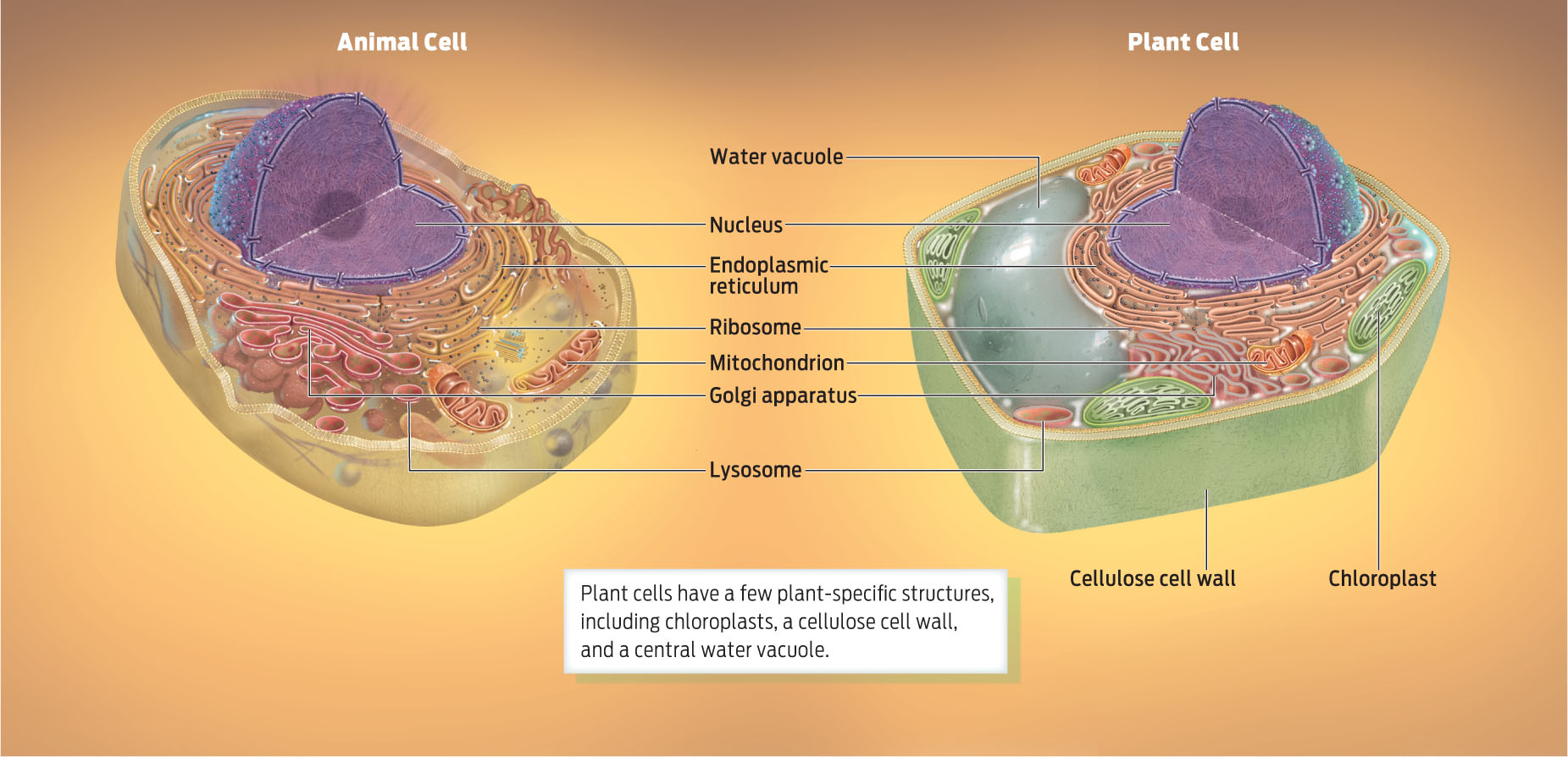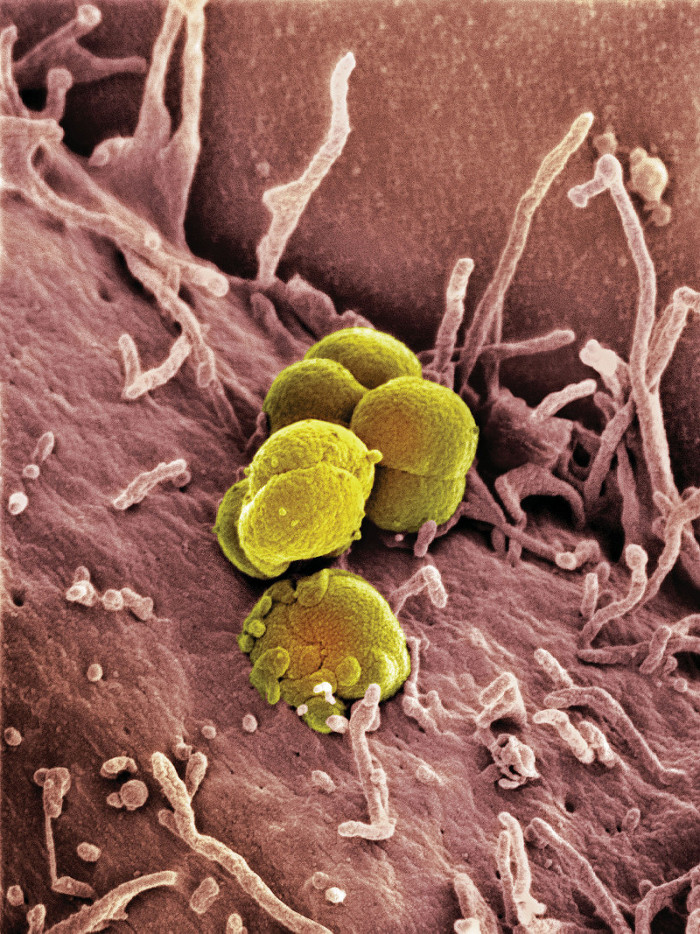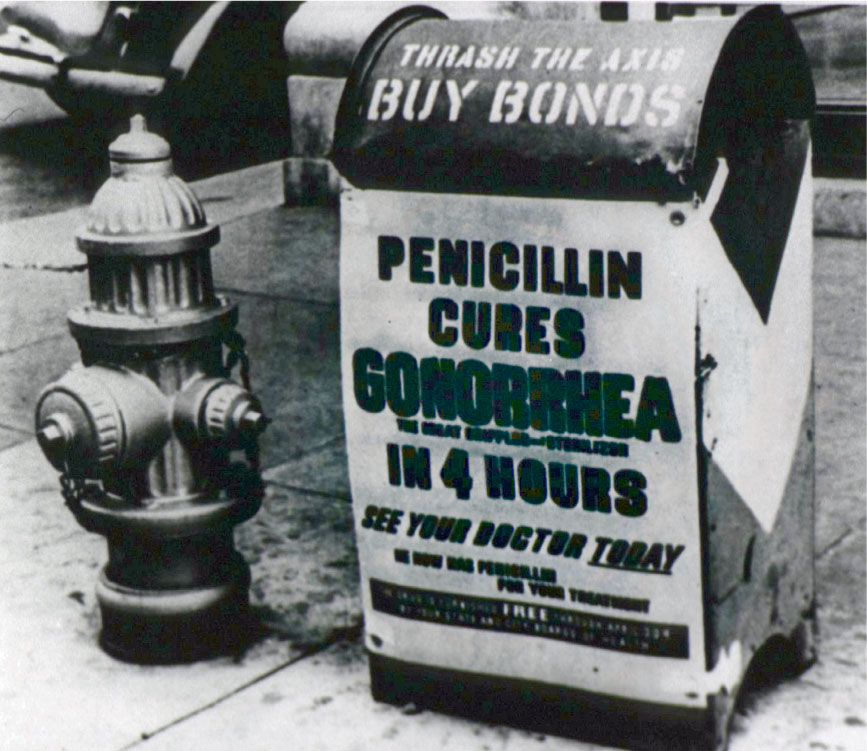YOUR INNER BACTERIUM
Antibiotics kill bacteria but leave humans unharmed because their cells have different structures. Of all the ways that prokaryotic and eukaryotic cells differ, the most obvious is the complexity of eukaryotic cells compared to their smaller prokaryotic cousins. In particular, eukaryotic cells–both animal and plant cells–are characterized by the presence of multiple, distinct membrane-bound organelles (INFOGRAPHIC 3.8).
Humans and other animals, as well as plants, fungi and protozoans, are eukaryotes–they are made up of eukaryotic cells that contain a number of internal organelles.


You can think of a eukaryotic cell as a miniature factory with an efficient division of labor. Each organelle is separated from the cell’s cytoplasm by a membrane similar to the cell’s outer membrane, and each performs a distinct function.
NUCLEAR ENVELOPE The double membrane surrounding the nucleus of a eukaryotic cell.
The nucleus is the defining organelle of eukaryotic cells (from the Greek eu, meaning “good” or “true,” and karyon, meaning “nut” or “kernel”). It is surrounded by the nuclear envelope, a double membrane made of two lipid bilayers dotted by small openings, called pores. The nucleus encloses the cell’s DNA and acts as a kind of control center. Important reactions for interpreting the genetic instructions contained in DNA take place in the nucleus, as well as the manufacture of ribosomes.

MITOCHONDRIA (SINGULAR: MITOCHONDRION) Membrane-bound organelles responsible for important energy-conversion reactions in eukaryotes.
Other organelles in a eukaryotic cell perform other specialized tasks. Mitochondria are the cell’s “power plants”—they use oxygen to extract energy from food and convert that energy into a useful form. Animals and plants both have mitochondria. Humans who inherit or develop defects in their mitochondria usually die—an indication of just how important these organelles are.
ENDOPLASMIC RETICULUM (ER) A network of membranes in eukaryotic cells where proteins and lipids are synthesized.
The endoplasmic reticulum (ER) is a vast network of membranes that serves as a kind of assembly line for the manufacture of proteins and lipids. The “rough” ER is studded with ribosomes making proteins; the “smooth” ER makes lipids. Newly made proteins travel from the ER to the Golgi apparatus, which packs the protein “cargo” into vesicles and then ships them to specific destinations, such as the cell membrane, other organelles, and the bloodstream. The nucleus, ER, and Golgi apparatus thus work together to make and transport proteins to specific locations in and out of the cell.
GOLGI APPARATUS An organelle made up of stacked membrane-enclosed discs that packages proteins and prepares them for transport.
CHLOROPLAST An organelle in plant and algal cells that is the site of photosynthesis.
Other eukaryotic organelles include the chloroplast, responsible for photosynthesis in plants, and lysosomes, the cell’s recycling centers, which digest and recycle molecules. In addition to these membrane-bound structures, a vast network of protein fibers called the cytoskeleton allows cells to move and maintain their shape, much the same way the human skeleton does (see UP CLOSE: EUKARYOTIC ORGANELLES).
LYSOSOME An organelle in eukaryotic cells filled with enzymes that can degrade worn-out cellular structures.
CYTOSKELETON A network of protein fibers in eukaryotic cells that provides structure and facilitates cell movement.
Prokaryotic cells carry out similar functions of energy conversion and protein transport, but they don’t contain these processes within separate organelles; everything occurs in the cytoplasm.
How did eukaryotic cells develop their factory-like compartments? That question has long intrigued biologists. One fascinating hypothesis was proposed in the 1960s by biologist Lynn Margulis, who argued that eukaryotic organelles such as mitochondria and chloroplasts were once free-living prokaryotic cells that become incorporated–en-gulfed–by other free-living prokaryotic cells.
ENDOSYMBIOSIS The scientific theory that free-living prokaryotic cells engulfed other free-living prokaryotic cells billions of years ago, forming eukaryotic organelles such as mitochondria and chloroplasts.
Although many considered this notion of endosymbiosis a crazy idea at first, a wealth of evidence now supports it. Mitochondria and chloroplasts are about the same size as bacteria, and to reproduce they divide in a manner similar to prokaryotic cells. Both mitochondria and chloroplasts have circular strands of DNA, just like prokaryotic cells. They also contain ribosomes that are similar in structure to prokaryotic ribosomes–so similar, in fact, that some antibiotics that target prokaryotic ribosomes can affect the ribosomes in eukaryotic mitochondria, which accounts for both the toxicity and the side effects of these antibiotics.
UP CLOSE EUKARYOTIC ORGANELLES

